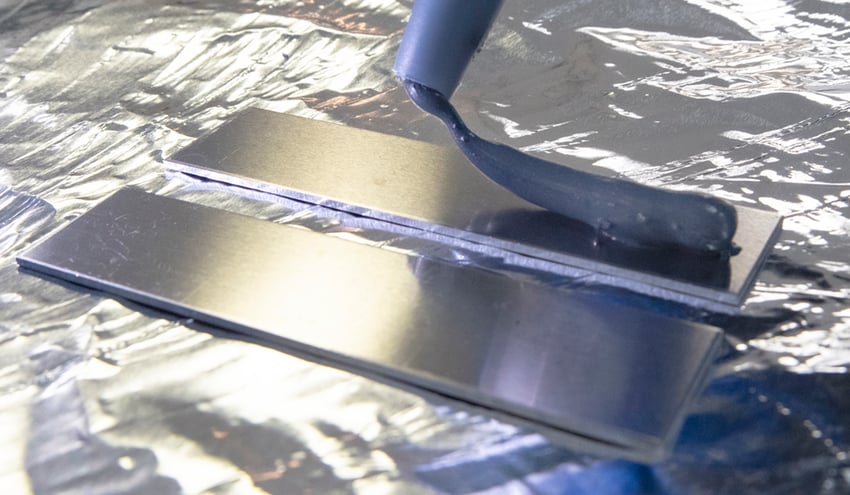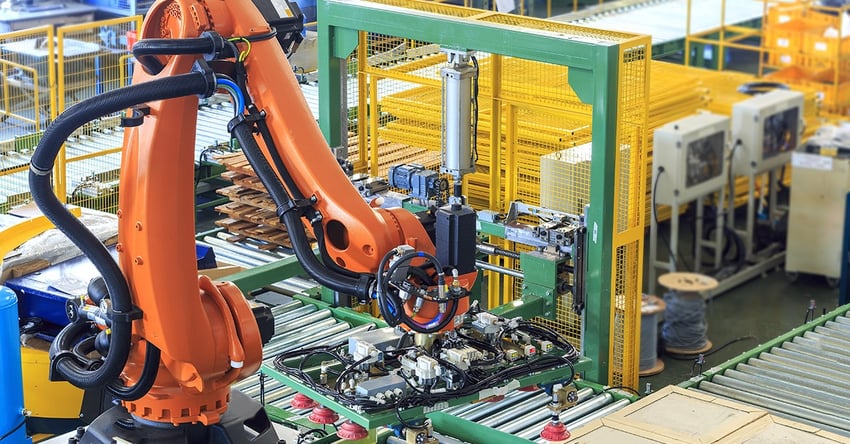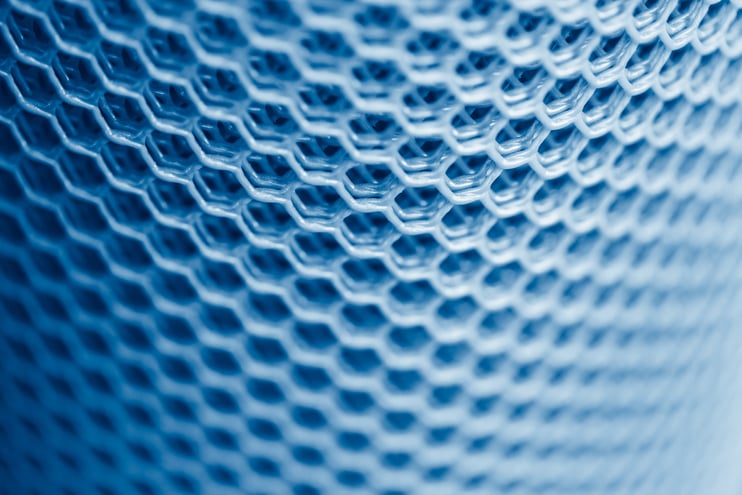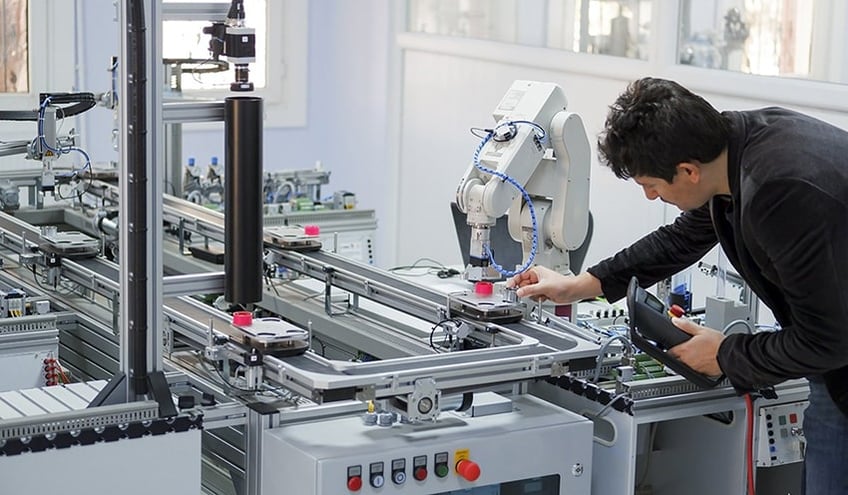Water contact angle seems like an obscure technical curiosity, but what if we said it could help you improve profitability and win new business?
Water contact angle provides information about surface energy, which tells you about the condition of a surface. This information is rarely used in the complex supply chains that characterize material surfaces across all industries. Instead, people make assumptions and (unintended) poor decisions, creating problems and costs for customers and suppliers.
Our term for the information that can be obtained from water contact angle is surface intelligence. Here’s how surface intelligence can remove the human factor to benefit Tier 1 and 2 suppliers and OEMs.
It’s (not) in the Contract
Supply chain management is characterized by contracts. These provide the basis for supply agreements between customers and suppliers. The problem is the engineers responsible for the products being bought and sold and for developing and maintaining the production processes know these contracts don’t document everything explicitly. Instead, there are usually references to industry standards, customs, and practices.
The result is ambiguity. Product and process engineers don’t know precisely what they need to supply, especially regarding requirements for surface cleanliness. Their only option is to make assumptions, and this is a problem. Cleanliness is of vital importance to bonding, whether that be adhesives, paint, or other coatings. If the surface isn’t clean enough, the bond won’t be strong enough, and the coating or product being supplied will fail prematurely.
The cost of failure – complaints, warranty claims, even recalls – can be extremely high, so engineering teams often err on the side of caution. They do all they can to ensure the surfaces they supply are clean enough, even though no one has defined how clean they need to be. Unavoidably, this adds cost.
When bidding on new business, suppliers down the chain must include this uncertainty in their pricing, which results in padding. The alternative is bidding low and only later finding additional cleaning is needed, which wasn’t budgeted for at the outset.
In short, rarely is anything about surface quality quantified in the contract. Instead, people have to make decisions based on their experience and knowledge. Inevitably, this risks mistakes, and it adds cost throughout the supply chain.
Evolving Customer Demands: A Supply Chain Dilemma
Contracts often extend over multiple years; 5 is not uncommon, and some run longer. While these long-term relationships provide security, they also create challenges: what the end customer wants in five years differs from what they ask for today. Or the regulatory environment changes. Or there are unexpected advances in materials, coatings, or adhesion science.
Sometimes, these changes happen gradually. The growing interest in and desire for sustainability is an example. The first Earth Day, in 1970, was a fringe event, so contrast that with Apple making concern for Mother Nature a central element of their most recent iPhone launch. Other times, as can happen with governmental regulation, changes are imposed quickly and sometimes with little warning.
For an example of how an unexpected demand for change impacts surface technology, consider an automotive manufacturer’s sudden desire to use post-consumer waste. Responding to expectations for improved sustainability, a CEO mandated this material be used in the vehicles their company manufactured. (A human factor no one had anticipated!)
This gave the process engineers a serious problem: the post-consumer “raw” material has properties that vary from batch to batch, yet a consistent bond was required. The solution was to determine the optimal water contact angle and use this to drive processing, treatment, and bonding processes.
Optimize the power of next-gen connectivity with data & surface intelligence.
Specialism Can Drive Innovation
Competition among Tier 1 and 2 suppliers drives a lot of innovation. Everyone is looking for ways to gain a cost advantage, improve quality, or offer new features that will appeal to the end user. This competition drives the development of deep expertise in niche areas, like metal surface preparation and coatings technology.
Surface intelligence is a new realm for these suppliers to innovate in, but it requires the ability to measure surface energy. Once attained through water contact angle, it provides a common language for suppliers to talk to customers, opening up new opportunities for improvement and innovation.
More specifically, a lot of effort and cost goes into surface cleaning because no one has a way of saying how clean a surface must be. Some companies rely on chemical cleaning, others use plasma or flame treatment, and some use combinations to guarantee against bonding problems.
Once it’s possible to measure surface readiness for bonding, requirements for surface preparation can be defined. This provides these Tier 1 and 2 suppliers with opportunities to innovate in terms of cleanliness.
Where Materials Meet: The Untapped Dimension
The contracts used throughout supply chains tie manufacturers down regarding characteristics like dimensions, appearance, and mass. This puts boundaries around the extent of possible innovation because no one wants to risk failure.
The ability to measure surface cleanliness provides a new dimension for contracts to address, a way to remove the human factor from the supply chain, and a new avenue for cooperation. Once someone has defined the specification for surface quality (the required surface energy for a good bond), the value can be shared with the supply chain. With this new specification, customers and suppliers can work together to optimize the quality and performance of bonds.
Examples of Powerful Specifications
There are many ways that companies use water contact angle ranges to reduce costs and improve quality. Here are a few examples to illustrate:
- Certain companies that handle the final assembly of components sourced from vendors have a requirement for the "just in time" arrival of parts with an acceptable range of water contact angle. This enables them to bypass the surface preparation process and seamlessly join the materials together.
- Companies that outsource the production of their products to contract manufacturers have the ability to establish specific requirements for regular testing. This ensures that the cleaning procedures are implemented and conducted effectively, resulting in a satisfactory outcome.
- Companies that install components in their product, like a battery, require the supplier to provide a traceable set of water contact angles to ensure that the battery will withstand weather and product cycle times as designed in production.
Mutually Beneficial Quantification
Manufacturing complex products like cars and computers requires lengthy supply chains. Supply chain management is about formalizing these relationships with contracts while still seeking to drive down costs and inventories and shorten lead times.
Surface intelligence is achieved by using water contact angle to measure surface energy; this shows the condition of the first few molecules of each surface that are the critical factor in creating reliable bonds. Measuring this in production provides a new way for OEMs and their tiers of suppliers to define and agree to requirements while removing ambiguity. This means having surface quality specifications on parts and knowing the factors that cause failure. Adding this value to contracts opens the door to productivity, quality, costs, and innovation opportunities.
All that’s needed is a common measurement, a common language, and a common network.
To learn how your business can utilize Surface Intelligence to drive innovation throughout your supply chain, download the eBook “The Advanced Guide to Transforming Product Development Through Surface Intelligence Data & Technology.”

















